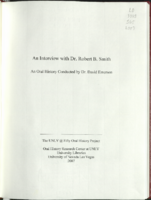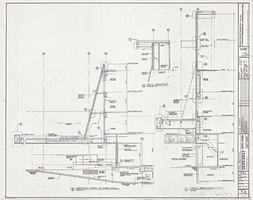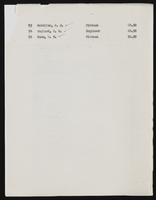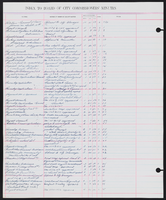Search the Special Collections and Archives Portal
Search Results

Transcript of interview with Joanna S. Kishner by Barbara Tabach, January 10, 2017
Date
Archival Collection
Description
Joanna Kishner epitomizes the native Southern Nevada who was raised in both a Jewish and secular world of Las Vegas. A daughter of Ellen Neafsey Jobes and Irwin Kishner, she was born in 1964 and graduated from Clark High School in 1982. As she recalls, the halls of Clark High School witnessed a stellar cast of characters in the early 1980s, from future casino executives, to additional judges, to comedian Jimmy Kimmel. Judge Kishner earned a double major in Political Science and Psychology from Claremont McKenna College (1986) and graduated from UCLA School of Law (1989.) She remained in California and worked as senior counsel for Warner Brothers, a division of Time-Warner Entertainment Company and was also an associate with the multi-national firm Paul Hastings Janofsky & Walker. In time, she felt the tug to return to her childhood roots in Las Vegas. She and her husband were married at Temple Beth Sholom, where she had her bat mitzvah and raises her own children in the Jewish tradition. Judge Kishner has been recognized for her legal work throughout the years, this includes pro bono work for disadvantaged children through the Children’s Attorney Project. When she set her sights on becoming a judge, she was joined by her young family as she knocked on thousands of doors to introduce herself and her passion for justice. In 2010, she was elected to Department XXXI of the Eighth Judicial District.
Text
sections (orthographic projections)
Orthographic drawings or works in another media depicting a building, object, or site as if cut through and exposed at one specific plane.
Authority Sources
Material Type

Transcript of interview with Donald L. Shalmy by Stefani Evans and Claytee D. White, March 10, 2017
Date
Archival Collection
Description
Text

Newspaper clipping, NAACP Bachelor of the Year Fund Raising Affair, publication unknown, April 29, 1976
Date
Archival Collection
Description
Newspaper clipping with photograph featuring Toni Miller from Western Airlines buying an advertisement from NAACP representatives Saran Knight, Eleanor Walker and Lubertha Johnson.
Text

Transcript of interview with Gus Mancuso by Lisa Gioia-Acres, September 27, 2008
Date
Archival Collection
Description
Text

Transcript of interview with Dr. Robert B. Smith by Dr. David Emerson, June 13, 2006
Date
Archival Collection
Description
Text

Architectural drawing of the Showboat Hotel and Casino (Atlantic City), wall sections, 1985
Date
Archival Collection
Description
Plans for the construction of the Showboat Hotel Casino in Atlantic City from 1985. Original material: parchment. Drawn by: P.K.
Site Name: Showboat Hotel and Casino (Atlantic City)
Address: 801 Boardwalk, Atlantic City, NJ
Image



